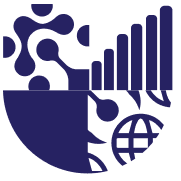The global endoluminal suturing devices market was valued at USD 73.6 million in 2024 and is projected to reach USD 147.2 million by 2030, growing at a CAGR of 10.1% from 2025 to 2030. The market is witnessing robust growth primarily due to the rising demand for minimally invasive surgical (MIS) techniques, which are preferred over traditional open surgeries for their ability to reduce patient recovery time, minimize postoperative complications, and improve overall outcomes. Endoluminal suturing devices play a vital role in these procedures, enabling surgeons to perform internal stitching within the gastrointestinal (GI) tract and other luminal organs through endoscopic access. They are especially important in procedures such as endoscopic resections and bariatric surgeries, where precision, control, and tissue integrity are critical for successful outcomes.
The growing incidence of gastrointestinal disorders, including obesity, colorectal cancer, and gastroesophageal reflux disease (GERD), has fueled the need for effective and safe surgical interventions. As the prevalence of obesity rises globally, bariatric surgeries such as sleeve gastrectomy and gastric bypass are becoming increasingly common, which in turn drives the demand for reliable and efficient suturing devices. These devices help surgeons achieve secure closure of internal tissue layers, thereby reducing the risk of leaks, bleeding, and infections. Furthermore, as patients increasingly prefer less invasive procedures with faster recovery, healthcare systems worldwide are adopting modern surgical technologies to meet these expectations, enhancing the overall demand for endoluminal suturing systems.
The market outlook remains highly promising, supported by an aging global population, increasing healthcare spending, and growing awareness of the benefits of minimally invasive surgeries. The elderly population, which is more prone to gastrointestinal and metabolic disorders, represents a key patient demographic for these procedures. Additionally, ongoing research and clinical trials focusing on the development of next-generation suturing devices featuring real-time feedback, smart sensors, and improved ergonomics are expected to further expand the market scope. As healthcare providers increasingly prioritize patient safety, cost-effectiveness, and improved surgical outcomes, the adoption of endoluminal suturing devices will continue to rise, driving sustained market growth through 2030.
Key Market Trends & Insights:
- Regional Insights: North America dominated the global endoluminal suturing devices market, accounting for a 43.4% revenue share in 2024, owing to its advanced healthcare infrastructure, early adoption of innovative surgical technologies, and the strong presence of leading medical device manufacturers. The Asia Pacific region is expected to grow at the fastest CAGR from 2025 to 2030, driven by an expanding patient base, rising healthcare investments, increasing awareness of minimally invasive surgeries, and improving hospital infrastructure across countries like China, India, and Japan.
- By Application: The gastrointestinal surgery segment accounted for a dominant revenue share of 35.2% in 2024, supported by the rising incidence of GI tract disorders and an increase in endoscopic procedures. The gastroesophageal reflux surgery segment is projected to advance at the fastest CAGR of 10.8% during the forecast period.
- By End Use: The hospitals segment held the largest share of the global market in 2024, as hospitals remain the primary centers for complex surgical interventions, supported by advanced equipment and specialized medical expertise. The ambulatory surgical centers (ASCs) segment is projected to witness the fastest growth during the forecast period.
Order a free sample PDF of the Endoluminal Suturing Devices Market Intelligence Study, published by Grand View Research.
Market Size & Forecast:
- 2024 Market Size: USD 73.6 Million
- 2030 Projected Market Size: USD 147.2 Million
- CAGR (2025-2030): 10.1%
- North America: Largest market in 2024
- Asia Pacific: Fastest growing market
Key Companies & Market Share Insights:
The global endoluminal suturing devices market is highly competitive, with major players focusing on technological innovation, product portfolio expansion, and strategic collaborations to strengthen their market presence. Companies are also actively involved in clinical trials and physician training programs to demonstrate the efficacy and safety of their products while promoting adoption among medical professionals. Furthermore, many industry leaders are incorporating digital health solutions and data-driven surgical tools to enhance workflow efficiency, improve patient outcomes, and support precision-based medical care.
- Medtronic plc is a leading player offering a range of endoluminal suturing devices that enhance surgical precision and patient safety in gastrointestinal procedures. The company’s focus on research and development (R&D) aims to advance surgical technology and provide healthcare professionals with tools that improve operational efficiency and clinical outcomes. Through innovation and surgeon education initiatives, Medtronic continues to reinforce its leadership in the field of minimally invasive surgery.
- Ethicon Endo Surgery, a subsidiary of Johnson & Johnson, is another major company specializing in advanced suturing and endoscopic solutions. The company’s broad product portfolio caters to a variety of applications, including bariatric and colorectal surgeries, where high-performance suturing devices are critical for reducing postoperative complications. Ethicon emphasizes safety, precision, and reliability, ensuring its devices meet the evolving needs of surgeons performing complex gastrointestinal procedures.
Other key participants in the market include Apollo Endosurgery Inc., B. Braun Melsungen AG, Terumo Corporation, and Boston Scientific Corporation. These companies are leveraging technological developments such as robot-assisted systems, enhanced visualization tools, and ergonomic designs to improve user experience and patient outcomes. Strategic partnerships, acquisitions, and product innovations are common across the industry, allowing firms to expand their geographical presence and strengthen their position in the global market.
Explore Horizon Databook – The world's most expansive market intelligence platform developed by Grand View Research.
Conclusion:
In conclusion, the global endoluminal suturing devices market is witnessing steady growth due to the increasing adoption of minimally invasive surgical techniques and the rising incidence of gastrointestinal disorders. Continuous technological advancements, including robotic-assisted and automated suturing systems, are improving surgical precision and patient outcomes. Growing awareness about the benefits of these procedures, such as shorter recovery times and reduced complications, is further supporting market expansion. As major companies invest in innovation and healthcare facilities adopt advanced tools, the market is expected to maintain a strong upward trajectory through 2030.







